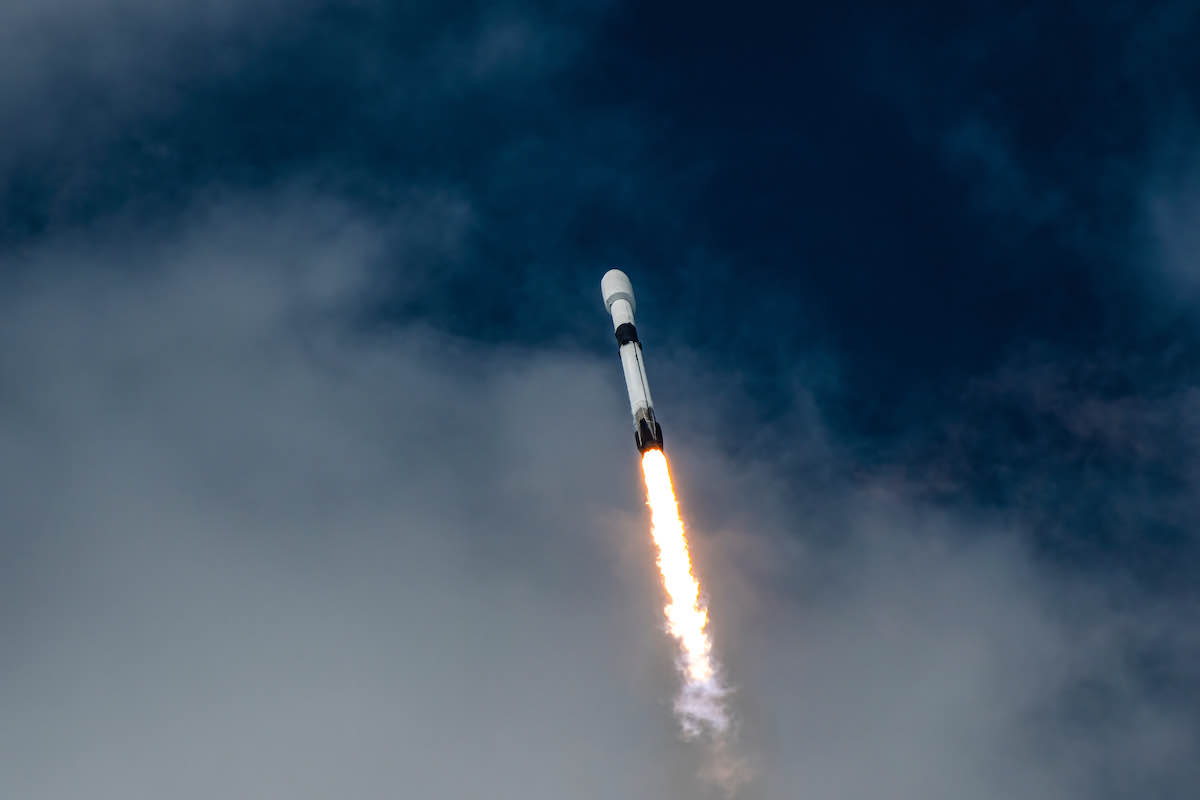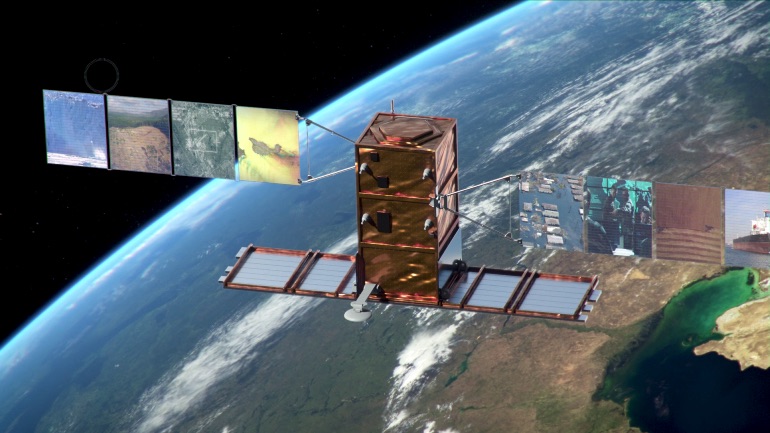
The Italian Space Agency says it has booked a launch with SpaceX as soon as November for a COSMO-SkyMed Second Generation radar remote sensing satellite, shifting the spacecraft from a European Vega C rocket to a Falcon 9 flight from Cape Canaveral.
A spokesperson for ASI, the Italian Space Agency, said two failures of Vega rockets in 2019 and 2020 delayed development of the upgraded Vega C launcher, which is now scheduled to make its first flight in the first quarter of 2022. The COVID pandemic also delayed the Vega C launch schedule, ASI said.
Italy’s COSMO-SkyMed Second Generation satellite fleet will provide high-resolution, all-weather global radar imagery for military and civilian applications. The first satellite in the fleet, named CSG 1, successfully launched in 2019 from French Guiana aboard a Russian Soyuz rocket sold and operated by Arianespace.
At that time, Italian officials hoped to launch the CSG 2 satellite on a Vega C rocket in late 2020. But delays in the Vega program pushed back the launch to 2021, and now the Vega C rocket would not be able to launch the CSG 2 spacecraft until later next year, after the Vega C test flight.
The CSG 2 satellite was one of the first payloads assigned to the new Vega C rocket when officials announced the launch contract with Arianespace in 2017.
Each COSMO-SkyMed Second Generation satellite weighs more than 4,800 pounds, or about 2.2 metric tons, fully fueled for launch.
Giuseppina Piccirilli, an ASI spokesperson, said Arianespace’s backlog of Soyuz and Ariane 5 rocket launches for the rest of 2021 is fully booked.
“It was not possible to have a European backup solution solution compliant with the CSG 2 schedule, thus an alternative solution with the U.S. provider SpaceX has been adopted, allowing (us) to keep the CSG 2 launch within the current year,” Piccirilli said.
A regulatory filing with the Federal Communications Commission, which authorize use of launch vehicle telemetry systems, shows the launch of a Falcon 9 rocket with the CSG 2 satellite is scheduled for Nov. 18 at 6:11 p.m. EST (2311 GMT).
Instead of launching the CSG 2 satellite, a Vega C rocket will instead launch the third spacecraft in the COSMO-SkyMed Second Generation fleet.
“In line with its long-lasting support (of) the European launch industry, ASI confirmed its trust in Arianespace and Vega C capabilities by contracting the launch of the CSG 3 satellite, planned for 2024,” Piccirilli said. “Moreover, other future launch opportunities for ASI missions with Vega C are under discussion, confirming Arianespace as a key partner for the agency.”
Piccirilli did not say whether the CSG 2 satellite will ride on a dedicated Falcon 9 launch, or if SpaceX will fill the remaining capacity of the rocket with other payloads, such as the company’s own Starlink internet satellites.

The COSMO-SkyMed Second Generation satellites are designed to fly in polar sun-synchronous orbits about 384 miles (619 kilometers) above Earth.
SpaceX’s Falcon 9 rocket will fly on a southerly trajectory from Cape Canaveral, first heading southeast to clear the coastline, then turning over the Atlantic Ocean to track parallel to Florida’s East Coast.
Each CSG spacecraft, built by Thales Alenia Space, carries a radar instrument designed to observe Earth during day and night passes, capturing imagery with a resolution better than a meter, or about 3.3 feet.
The second-generation Italian radar observation satellites will expand, and eventually replace, coverage provided by four first-generation COSMO-SkyMed spacecraft launched aboard United Launch Alliance Delta 2 rockets from 2007 through 2010.
The COSMO-SkyMed radar reconnaissance network, intended for military and civilian use, is funded by the Italian Space Agency, the Italian Ministry of Defense and the Italian Ministry of Education, University and Research.
The Italian government has ordered four CSG satellites from Thales.
Featuring X-band synthetic aperture radars, the COSMO-SkyMed satellites collect imagery by sending radar signals toward Earth, then collecting the beams reflected off the surface. The reflected signal contains information about surface topography and roughness, yielding an image that can show vegetation, water surfaces, roads, bridges, airplanes and ships, among other features.
The COSMO-SkyMed satellites work in tandem with Argentina’s two SAOCOM 1 radar satellites, which collect data using L-band instruments. Both SAOCOM 1 satellites launched on Falcon 9 rockets.
Email the author.
Follow Stephen Clark on Twitter: @StephenClark1.
